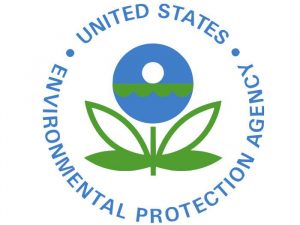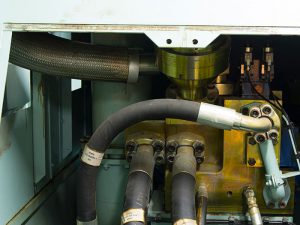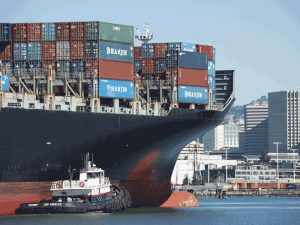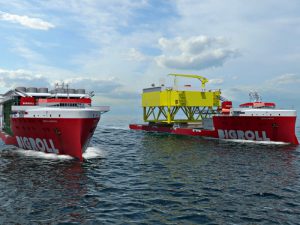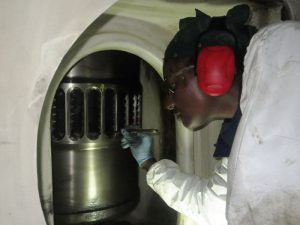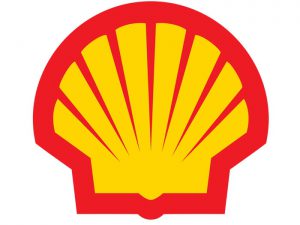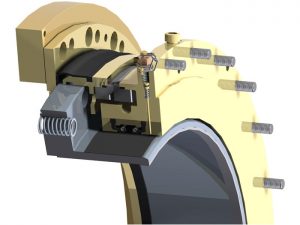With the U.S. Environmental Protection Agency’s Vessel General Permit (VGP) regulations in place for several years now and Small Vessel General Permit (sVGP) poised to expand these regulations to new classes of vessels, marine operators have embraced the use of environmentally acceptable lubricants (EALs) and become familiar with the inherent environmental and performance benefits of switching from conventional lubricants.
However, there is still a great deal of confusion in the marketplace surrounding EAL choice and maintenance. It’s important for operators to educate themselves on which type of EAL is best suited to different applications and strategies for maximizing ROI and equipment life.
The EPA recognizes four types of EALs. While all meet requirements, these lubricants vary widely in terms of suitability for different applications, performance characteristics, and fluid life, among other considerations. While all EALs offer the advantage of being high viscosity index lubricants (High-VI), it is important to cut through confusing and oftentimes contradictory marketing claims to understand the relative advantages and disadvantages of each type, based on its chemical composition.
- Vegetable Oils (HETG) – Also known as triglycerides or natural esters, these lubricants are made of vegetable, rapeseed (Canola), sunflower, coconut, palm or soybean oil. HETGs provide very good wear properties and are compatible with most seals and hoses, but are not as well suited to high temperature applications as other EALs. They are also more susceptible to hydrolysis in the presence of water and have a shorter lifespan than other EALs. With that in mind, they are best suited to land-based applications with scheduled change-out intervals.
- Synthetic Esters (HEES) – Esters are synthesized by the reaction of an alcohol with an acid. This reaction process allows for the flexibility to customize the type of ester used for a particular application. Generally, HEESs offer high performance, good oxidative and thermal stability and corrosion prevention, but they can be prone to hydrolysis in the presence of water. They work well in a wide range of land and marine applications with scheduled change-out intervals. Given possible hydrolysis issues, it’s best to use saturated hinder esters to provide the best stability with marine applications.
- Polyalkylene Glycols (HEPG) – Made of synthetic, petroleum based oil, HEPGs are created by the polymerization of ethylene or propylene oxide. HEPGs are designed to be water soluble, but this water solubility may increase toxicity. They are well suited to operate in high and low temperatures, and they have strong fire-resistant properties, which make them an excellent choice for volatile environments. HEPGs are typically recommended for use in a wide range of both land and marine applications with scheduled change-out intervals. On the downside, they are typically not derived from a renewable resource, are not compatible with other mineral oils and EALs, and can break down certain equipment seals, hoses, paints and varnishes.
- Polyalphaolefins (PAOs) and related hydrocarbon products (HEPR) – Often referred to as classic mineral oil based lubricants, HEPRs are synthesized hydrocarbons traditionally derived from crude oil meant to provide a low viscosity base oil that is readily biodegradable. However, more recently, HEPR type base stocks from renewable sources have been developed. HEPRs are highly durable and offer extended wear protection and fluid life, making them an ideal choice for equipment whose fluid cannot easily or frequently be changed. HEPRs also offer broad temperature range performance and seal compatibility, with good corrosion protection and strong hydrolytic and oxidative stability, reducing friction, preventing system wear and increasing efficiency. Essentially, HEPRs are recommended for use in a wide range of land and marine applications with scheduled change-out intervals. They also offer the added benefit of drop-in replacement and offer excellent water separation characteristics.
Getting the Water Out: Emulsifying Versus Demulsifying Fluids
Another critical decision factor in EAL choice is how the lubricant interacts with water. In marine environments it is not a question of whether, but how and how much water will enter a hydraulic system. While some operators choose to use emulsifying fluids that can essentially absorb this water, recent studies have shown that the presence of water in the system, even if it has been emulsified, serves as a catalyst for oxidation and hydrolysis – the formation of acids that corrode and damage the system. These same studies suggest that the use of demulsifying EALs – ones that separate the water from the fluid for easy extraction – have the potential to greatly extend equipment service life and performance. Like conventional oil, HEPRs have the best demulsifying properties, making them a great choice for marine applications.
Choosing Wisely
The chart below provides information on the specific properties and performance attributes of each type of EAL, as well as standard petroleum based lubricant, to help guide your decision-making.
| |
HETG |
HEES |
HEPG |
HEPR |
Standard Petroleum |
| Readily Biodegradable |
Yes |
Yes |
Yes |
Yes |
No |
| Ecotoxicity |
Low |
Low |
Low* |
Low |
High |
| Bioaccumulation Potential |
No |
No |
No |
No |
Yes |
| Sheen |
No |
No |
No |
No |
Yes |
| Seal Compatibility |
Good |
Good |
Poor |
Good |
Good |
| Wear Performance |
Very Good |
Very Good |
Very Good |
Very Good |
Very Good |
| Oxidation Performance |
Poor |
Good |
Very Good |
Very Good |
Very Good |
| Low Temperature Performance |
Poor |
Very Good |
Very Good |
Very Good |
Poor |
| Viscosity Index |
Very Good |
Very Good |
Very Good |
Very Good |
Poor |
*Solubility may increase the toxicity of some PAGs
Best Practices for Extending Fluid and Equipment Life and Maximizing ROI
Choosing the right EAL is only half the battle; measuring the effectiveness of your chosen lubricant and instituting a proper maintenance regime is essential to ensuring performance, protecting your equipment and getting the most for your money.
Maintenance Protocols
In addition to establishing performance benchmarks, logging all issues and causes of downtime, making timely repairs and establishing a regular change out schedule, cleanliness control is one of the single most important and often overlooked aspects of effective lubricant maintenance.
To ensure cleanliness and avoid contamination, refill or dispense only from clean, sealed containers. It’s also important to follow OEM recommendations, establish a set protocol and document all maintenance, including fluid top-offs.
Oil Analysis
Oil analysis, another critical component of maintenance, is the laboratory analysis of a lubricant’s properties, suspended contaminants and wear debris to provide a snapshot of how fluids and equipment are performing at a given time and over time. This analysis is performed by capturing oil samples during routine predictive maintenance to provide meaningful and accurate information on lubricant and machine condition. By tracking oil analysis sample results over the life of a particular machine, trends can be established which can help extend equipment, eliminate costly emergency repairs and increase uptime, all of which results in significant savings.
If you do not currently have an oil analysis program in place, here are some tips to get started:
- Find the right partner – Look for a lubricant vendor that will provide the following:
- a clear plan of how often (monthly, quarterly) and at what intervals your lubricant should be sampled
- sampling instructions
- clear communication, including results and recommendations for improvement
- oil testing and analysis through independent laboratories
- Ask to see a sample analysis and make sure it tests for the following:
- Viscosity @ 40°C and 100°C
- Acid Number
- Water contamination
- Elemental Content
- Particle Count
- Use the Data – Failing to take appropriate recommended maintenance actions can be very detrimental, but use common sense to ensure that the suggested action is practical and cost effective and examine possible alternatives.
If you have questions about choosing the right EAL and maintenance practices for your operation, application and needs, the best place to start is to contact your OEM and possible vendors. At RSC Bio Solutions, we work closely with our customers to set up customized programs and solutions and continue to make recommendations based on regular results to help our customers protect their equipment, their workers and the environment. For more information, please visit www.rscbio.com.
